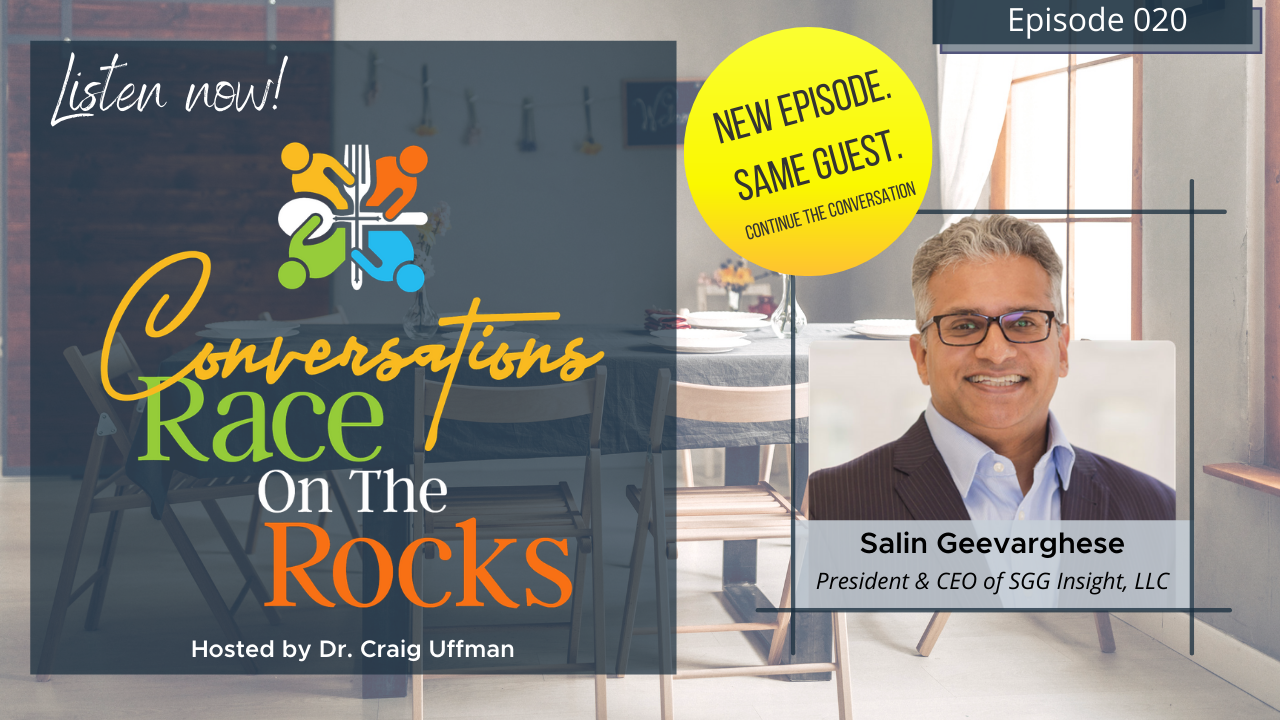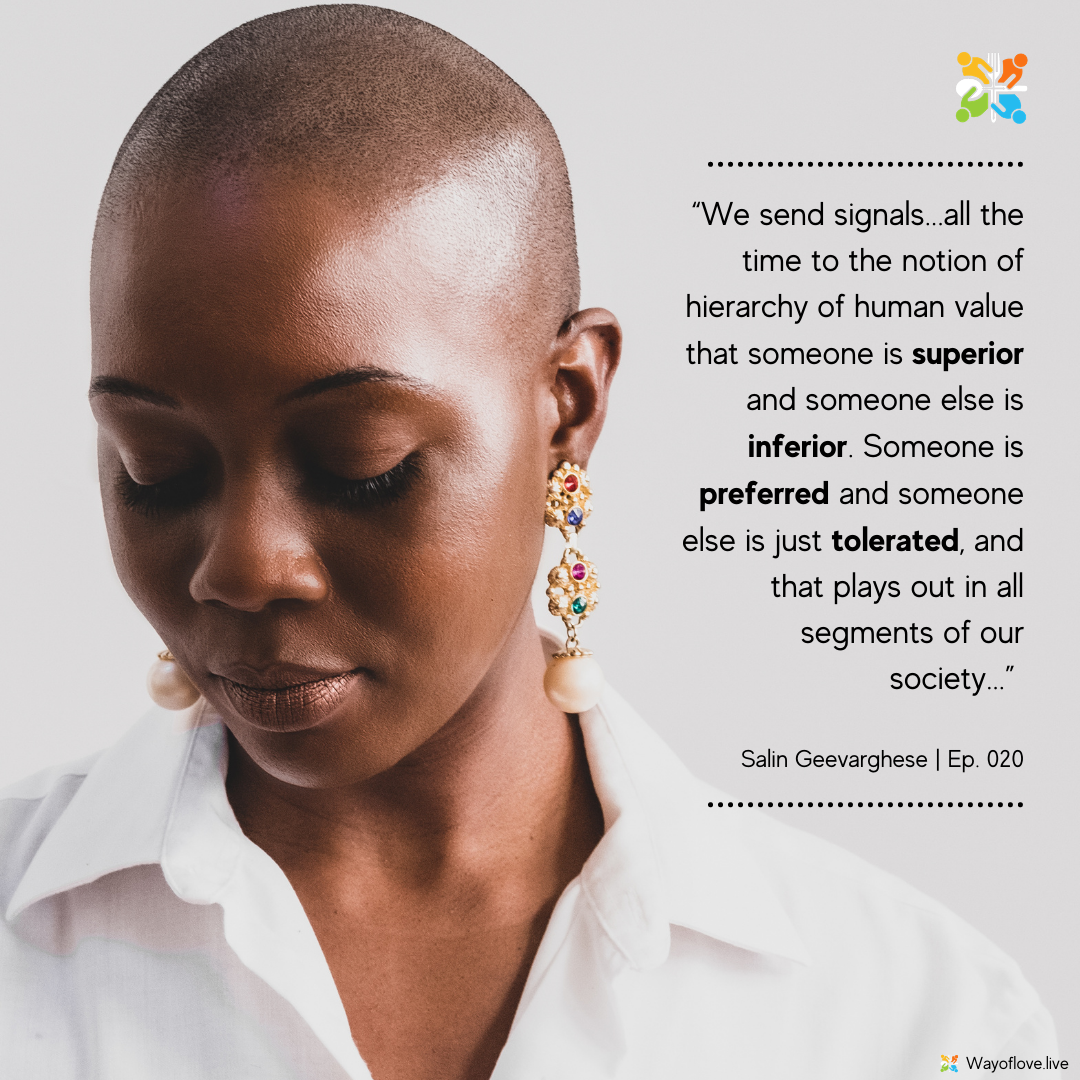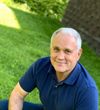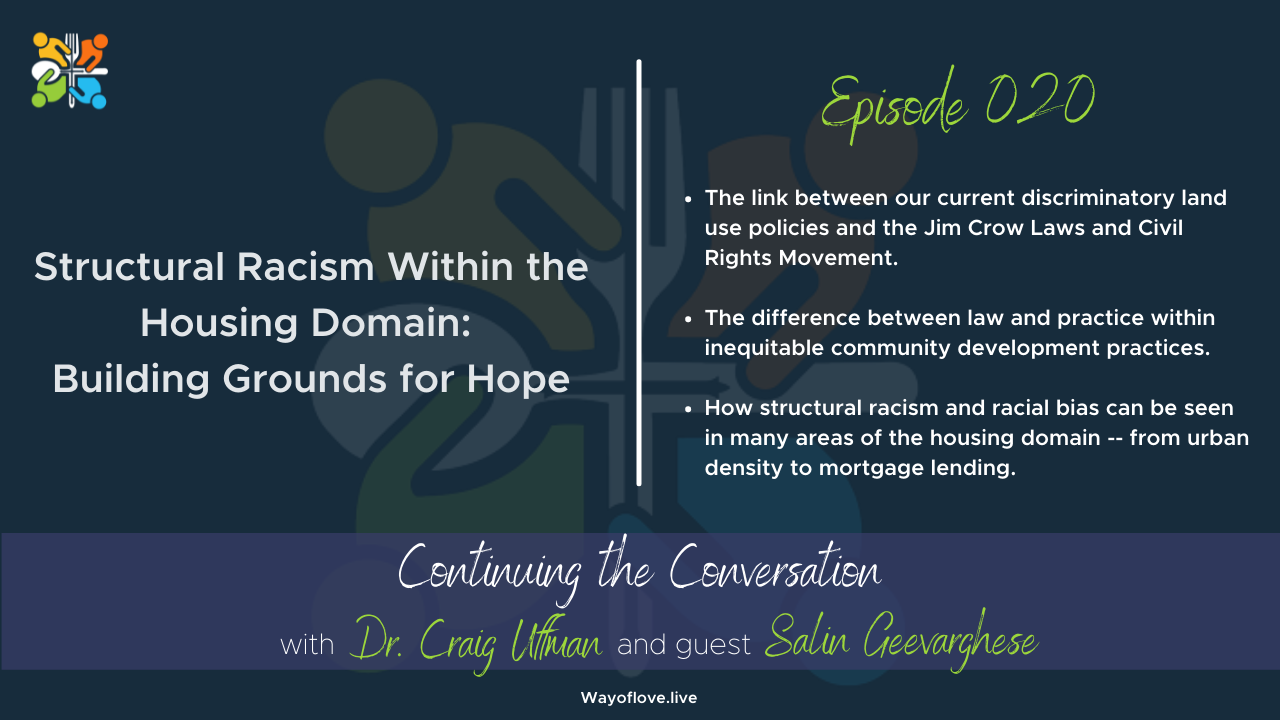“...I suspect for much of your audience, you need only look at your own city or town to find markings of that structural racism that could be overt or they could be lurking.” - Salin Geevarghese
Listen now on Spotify, Apple Podcasts, Google Podcasts, Stitcher and more!

We covered a lot of ground in beginning to understand racial inequities in the housing domain in our last episode. Mr. Salin Geevarghese joined us in that conversation, and we will be picking up where we left off in this episode, drilling down even deeper into that discussion. What are some of the obstacles that are impeding our dream of truly becoming the diverse and inclusive society that values equal opportunities for all? Tune in as we begin to answer that question.
As a reminder, Salin is a man with many hats but is probably best known for being a deputy assistant secretary at the Department of Housing and Urban Development for President Obama and his administration. He is currently one of the world's foremost experts in the art of bringing opposing groups together to transform racially polarized pockets of urban blight into sustainably inclusive cities and communities.
Salin's credentials make him the perfect guest to help us with our exploration of the stories that have shaped the racial landscape with which we currently wrestle, and this episode dives further into what we talked about last time about inequity within the housing domain. We discuss how getting rid of the Jim Crow Laws and implementing the 14th Amendment might have been progressive movements but did not solve all problems and certainly did not put an end to structural racism. Salin shares with us what the situation is like where he lives and how there is a shocking 15-20 year gap in life expectancy depending on what part of town you live, but he also lays down ground for hope and how even though we still have a long way to go, there are already signs of progress.
We have been so privileged to have an expert in this field come onto the podcast and help us understand so much of what many of us might not have been aware of. I hope that you will join us in our next episode when we meet another expert in a related field, Dr. Kurt Culbertson. Dr. Culbertson is a prominent landscape architect who has built some places that you would probably even recognize. We will dig deep into these issues of racial inequity from the perspective of landscaping and architecture. Thanks for listening, and be sure to invite your friends to tune in as well!
Questions for Clergy and Other Group Leaders
- To what extent have Fair Housing laws since 1968 remedied and prevented discriminatory land use and housing-related policies in the 2020s?
- What about inequitable community development practices?
- What about racial bias in mortgage lending and rental housing?
- What other racially biased policies and practices that have fostered pervasive negative impacts on non-whites that should concern us today?
- Describe the Affirmatively Furthering Fair Housing Rule. How does it help us gather around a measure for weighing our success in correcting racial inequities in the housing and community development domain?

Show Notes
[2:22] – Salin reveals why he began walking the path that he is on now and how he hopes more people will be inspired to work toward building a more inclusive nation.
[4:06] – Salin links our current discriminatory land use policies to the Jim Crow Laws and the Civil Rights Movement.
[6:52] – Dr. Uffman has a close friend who doesn't believe that structural racism exists because of the 14th Amendment having been passed.
[8:58] – Salin expounds upon the difference between law and practice within inequitable community development practices.
[9:40] – Salin explains how urban density is an indicator of structural racism.
[11:42] – You can hear people using both covert and overt language that speaks of trying to avoid living near people with less means or who look different than they do.
[14:11] – Salin explains how we are doing concerning racial bias within mortgage lending.
[15:54] – Communities need various types of housing in order to thrive.
[18:30] – Dr. Uffman and Salin discuss maps that show data supporting Salin's argument and how listeners can access them.
[21:48] – Salin provides other examples of pervasive policies and practices that have led to negative impacts on people of color.
[24:00] – Dr. Uffman gives an example of the post office serving as a bank to many who use money orders due to inequity.
[26:11] – The hierarchy of human value is something that permeates society all the time through social signals that are sent.
[28:30] – Salin worked during the Obama administration on a tool to help us build diverse and inclusive communities.
[31:18] – The Trump administration, as Salin describes, immediately delayed implementing Affirmatively Furthering Fair Housing and ultimately rescinded it entirely.
[34:37] – Salin shares what he is currently seeing that seems to be promising.
[36:27] – It is important that we do something about the inequity of neighborhoods while also allowing people who don't want to move to stay where they are, and Salin details why that is.
[38:20] – Salin moves the conversation toward more concrete examples rather than abstract examples.
[40:38] – Salin reflects on the current state of the Sandtown-Winchester neighborhood of Baltimore.
[44:05] – There is grounds for hope, and we can be a part of the solution. There are already signs of progress.
[47:03] – Salin encourages listeners to be open and willing to understand that society's sense of hierarchy of human value is prevalent everywhere.
Links and Resources
Connect with Dr. Craig Uffman:

